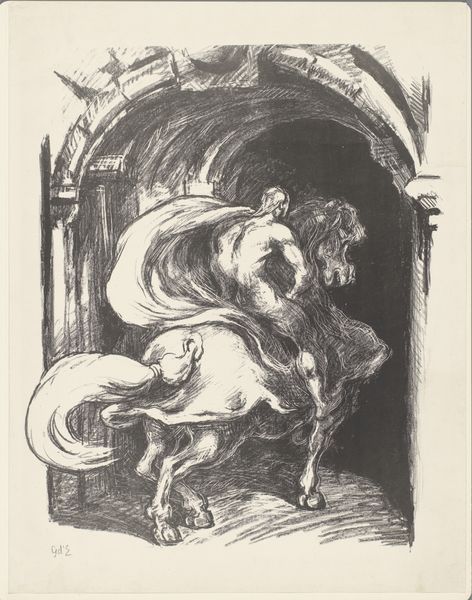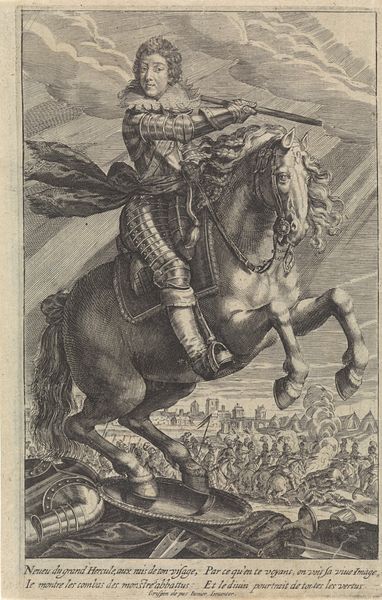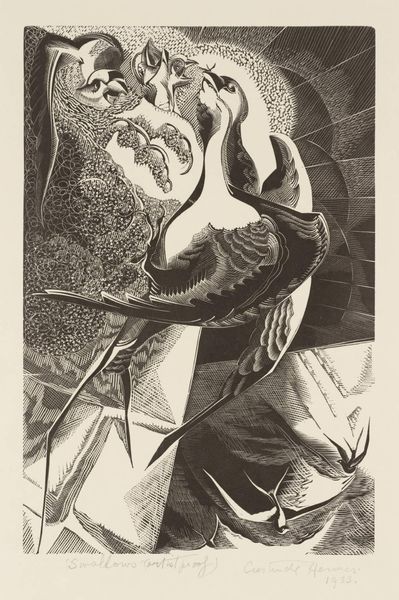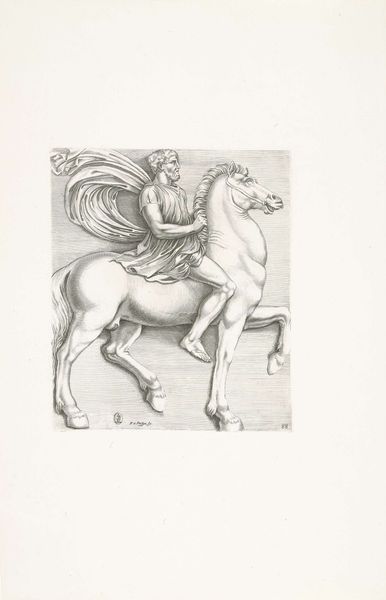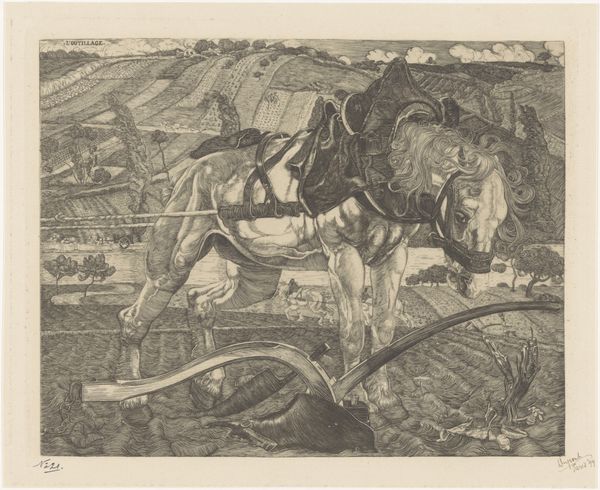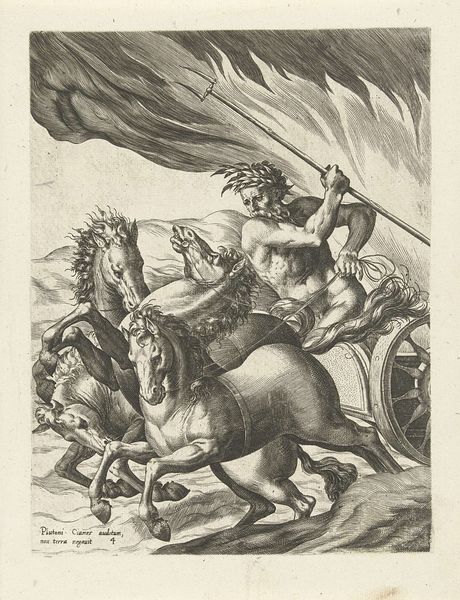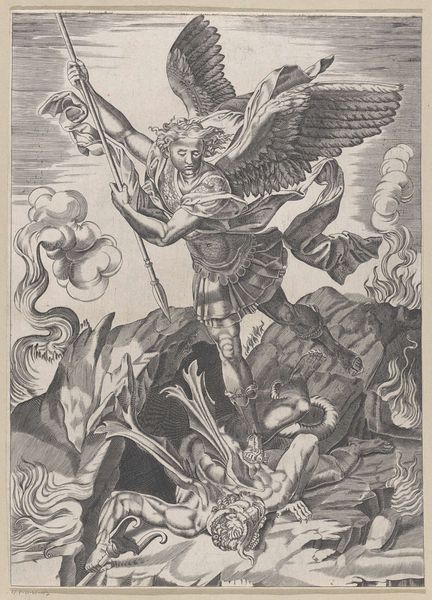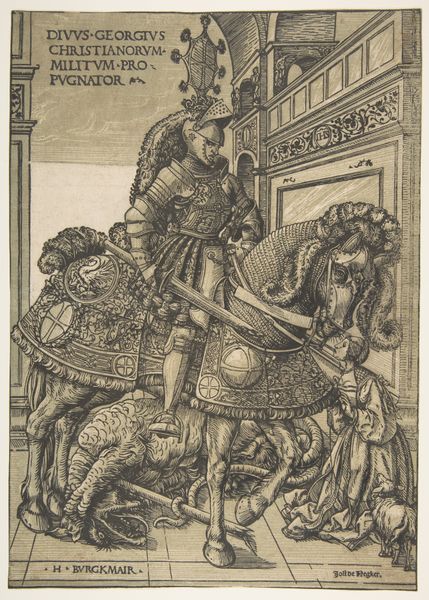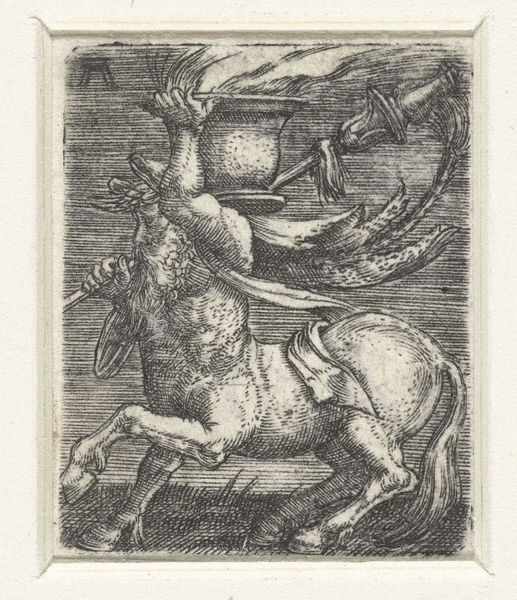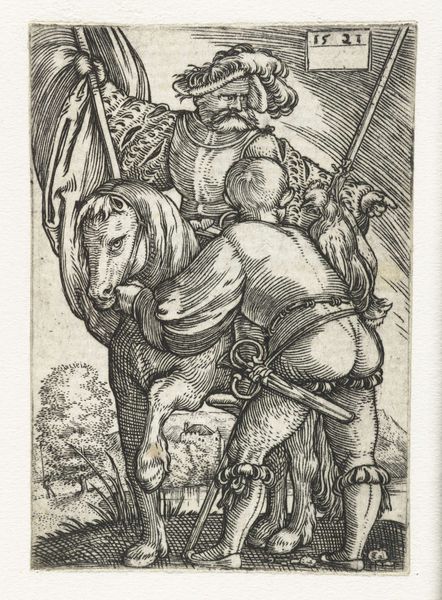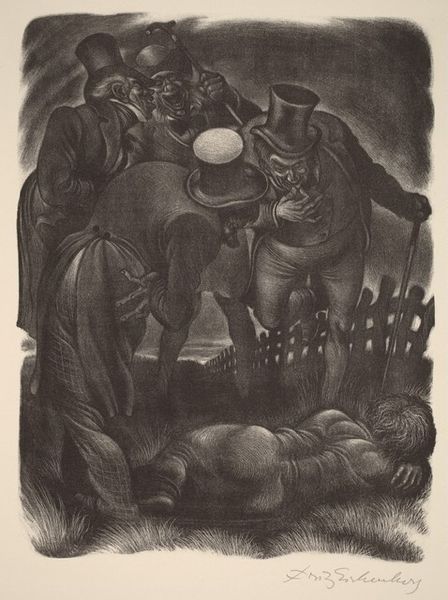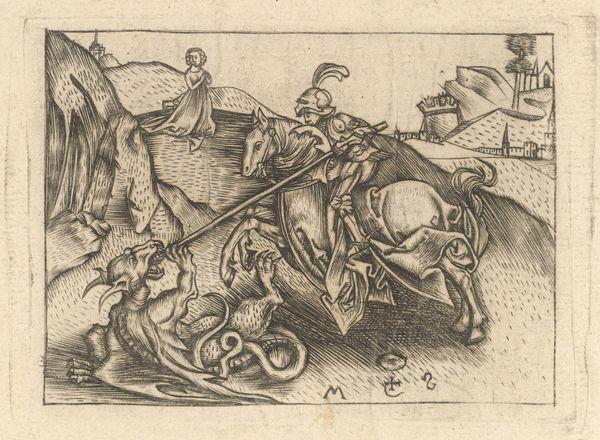
Dimensions: image: 419 x 311 mm sheet: 486 x 358 mm
Copyright: National Gallery of Art: CC0 1.0
Editor: This engraving, "December 7, 1941," by Leo Katz, made in 1942, is striking. The knightly figure and horse in armor stand above a field of skulls, framed by what looks like the ruins of a brick wall. There's an unsettling contrast between the highly polished surfaces of the figures and the decay implied by the setting. How do you interpret this work, especially considering its historical context? Curator: Focusing on the means of production helps understand Katz's perspective. The choice of printmaking itself is significant. Prints allowed for wider distribution and engagement than painting; it becomes less about rarefied, individual genius and more about speaking to the masses. Katz explicitly addresses the means of material and human destruction. Consider how he represents the date, 'Dec. 7, 1941', inscribed as if on a memorial. What material realities led to this day becoming engraved in the collective consciousness? Editor: That’s interesting. So the date isn’t just a title, but also an indictment. And, you are pointing out that printmaking itself has implications. It also makes me think about labor-- the labor to create an object, in parallel with the labor to destroy something… What can the choice of engraving offer in its particular materiality, relative to other printmaking techniques? Curator: Exactly. Engraving requires intense, meticulous labor, literally carving an image into a metal plate, then multiplied to scale in prints. In that regard, the technical process speaks to the immense human labor driving both the war machine and the artistic act of memorializing, while reflecting the social context. Are there other elements in the material making of the print, such as composition, line, texture, or mark, that can you see contributing to its meanings? Editor: The sharp lines and strong contrasts really heighten the sense of drama. I now realize the snakes aren’t merely decorative, but intertwined symbols of death and destruction choking the knight and his horse. Thanks for helping me unpack this loaded image, looking at both the means of its creation and the conditions of destruction it portrays! Curator: Absolutely. It’s essential to see how material choices articulate deeper historical and social anxieties and function, even within the most overtly symbolic imagery.
Comments
No comments
Be the first to comment and join the conversation on the ultimate creative platform.

